Filter by

Sowing Legume Seeds, Reaping Cash : A Renaissance within Communities in Sub-S…
This open access book shares impact stories – testimonies from various value chain actors who have been part of the Tropical Legumes (TL) projects, over the past twelve years. The Tropical Legumes projects led by ICRISAT in three parts (TLI, TLII and TLIII), constitute a major international initiative supported by the Bill & Melinda Gates Foundation (BMGF) and jointly implemented by the Inter…
- Edition
- 1
- ISBN/ISSN
- 9789811508455
- Collation
- XVI, 106 hlm; ill., lamp.,
- Series Title
- -
- Call Number
- -

The Potato Crop : Its Agricultural, Nutritional and Social Contribution to Hu…
This book is open access under a CC BY 4.0 license. This book provides a fresh, updated and science-based perspective on the current status and prospects of the diverse array of topics related to the potato, and was written by distinguished scientists with hands-on global experience in research aspects related to potato. The potato is the third most important global food crop in terms of cons…
- Edition
- 1
- ISBN/ISSN
- 9783030286835
- Collation
- XVII, 518 hlm; ill., lamp.,
- Series Title
- -
- Call Number
- -

The Wheat Genome
This open access book provides the first comprehensive coverage of the wheat genome sequence since the publication of the draft and reference sequences for bread wheat and durum wheat. It presents an overview and all aspects of the gold standard sequence of the bread wheat genome, IWGSC RefSeq v1.0 and its subsequent improvements through 2022 (IWGSC RefSeq v2.1), as well as the sequencing of mu…
- Edition
- -
- ISBN/ISSN
- 978-3-031-38294-9
- Collation
- XIV, 320
- Series Title
- -
- Call Number
- -
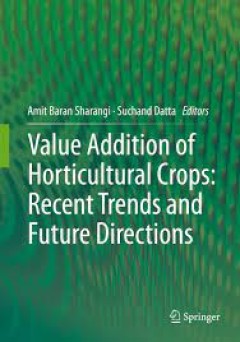
Value Addition of Horticultural Crops: Recent Trends and Future Directions
This book combines several ideas and philosophies and provides a detailed discussion on the value addition of fruits, vegetables, spices, plantation crops, floricultural crops and in forestry. Separate chapters address the packaging, preservation, drying, dehydration, total quality management and supply chain management of horticultural crops. The book explains value addition as a process of in…
- Edition
- -
- ISBN/ISSN
- 978-81-322-2262-0
- Collation
- -
- Series Title
- -
- Call Number
- -
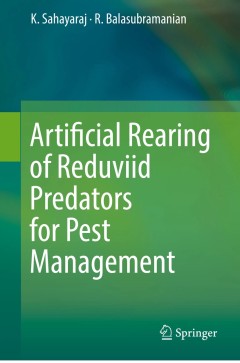
Artificial Rearing of Reduviid Predators for Pest Management
This eye-opening book focuses on the development of techniques to mass-produce reduviid predators and important generalist predators, an endeavor that won’t prove sufficient if the cost of commercialization is prohibitive. Advancing mass production to the level of economic feasibility is critical, so that these new technologies can compete in the open market. This book commences with a rev…
- Edition
- Ed. 1
- ISBN/ISSN
- 978-981-10-2522-8
- Collation
- XVI, 180
- Series Title
- -
- Call Number
- 630 BAL a
Reproductive Diversity of Plants
The first part of the book presents the evolution of plants starting from photosynthetic cells to topics like Gymnosperms and Angiosperms, including the evolution of the breeding system. Geological and molecular data were used, helping us to show with more details each of the phases presented. Also, specialization of the reproductive systems such as evolution of unissexuality (dioecy and monoe…
- Edition
- Ed. 1
- ISBN/ISSN
- 978-3-319-21254-8
- Collation
- -
- Series Title
- -
- Call Number
- -
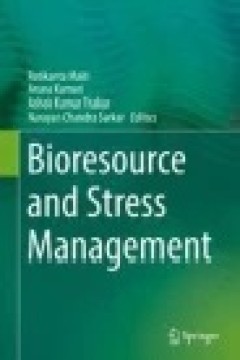
Bioresource and Stress Management
This book is a compilation of recent global measures to conserve bio-resources and manage biotic and abiotic stresses. It highlights emerging issues related to agriculture, abiotic and biotic stress factors, ethnic knowledge, climate change and global warming, as well as natural resources and their sustainable management. It also focuses on the consolidated efforts of scientists and academics e…
- Edition
- 1
- ISBN/ISSN
- 978-981-10-0995-2
- Collation
- XV, 276
- Series Title
- -
- Call Number
- 150.6
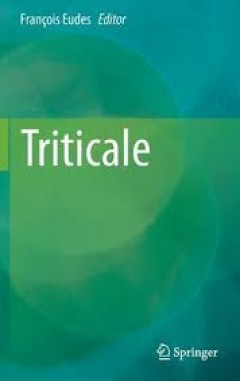
Triticale
Triticale crop species has received substantial research support since the mid-20th century making it a commercial success in many countries, in diverse value propositions. However, no recent book captures the new knowledge and progresses made in more than 2 decades. The purpose of this work is to review and collate the new knowledge of triticale plant biology and agronomy, while considering th…
- Edition
- -
- ISBN/ISSN
- 978-3-319-22551-7
- Collation
- -
- Series Title
- -
- Call Number
- -
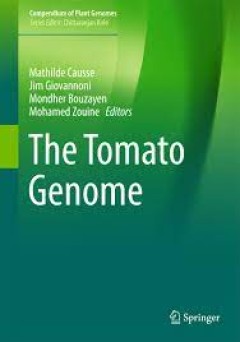
The Tomato Genome
This book describes the strategy used for sequencing, assembling and annotating the tomato genome and presents the main characteristics of this sequence with a special focus on repeated sequences and the ancestral polyploidy events. It also includes the chloroplast and mitochondrial genomes. Tomato (Solanum lycopersicum) is a major crop plant as well as a model for fruit development, and the av…
- Edition
- -
- ISBN/ISSN
- 978-3-662-53389-5
- Collation
- -
- Series Title
- -
- Call Number
- -
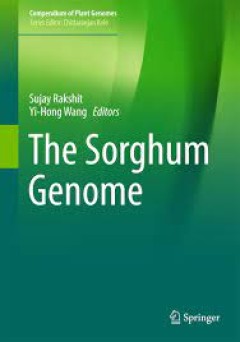
The Sorghum Genome
This book provides insights into the current state of sorghum genomics. It particularly focuses on the tools and strategies employed in genome sequencing and analysis, public and private genomic resources and how all this information is leading to direct outcomes for plant breeders. The advent of affordable whole genome sequencing in combination with existing cereal functional genomics data has…
- Edition
- -
- ISBN/ISSN
- 978-3-319-47789-3
- Collation
- -
- Series Title
- -
- Call Number
- -
 Computer Science, Information & General Works
Computer Science, Information & General Works  Philosophy & Psychology
Philosophy & Psychology  Religion
Religion  Social Sciences
Social Sciences  Language
Language  Pure Science
Pure Science  Applied Sciences
Applied Sciences  Art & Recreation
Art & Recreation  Literature
Literature  History & Geography
History & Geography